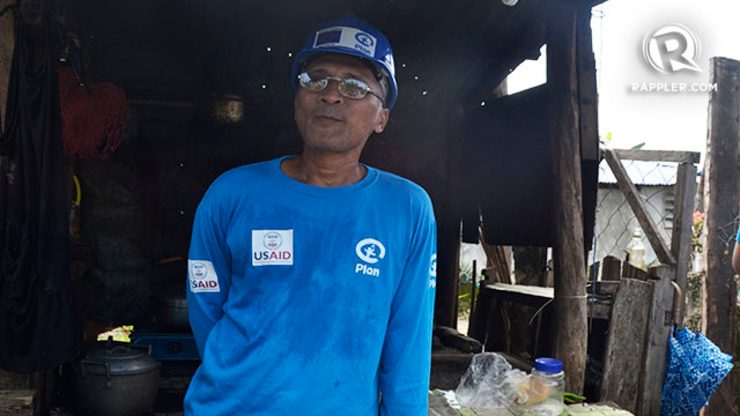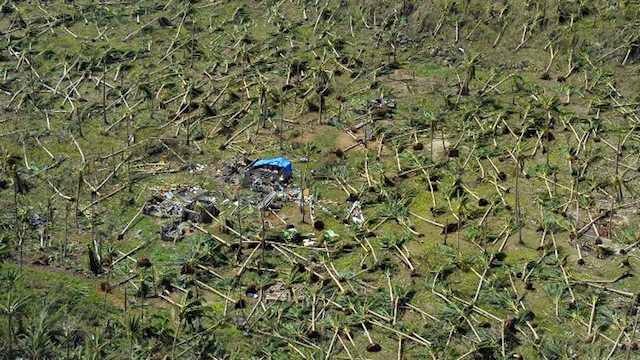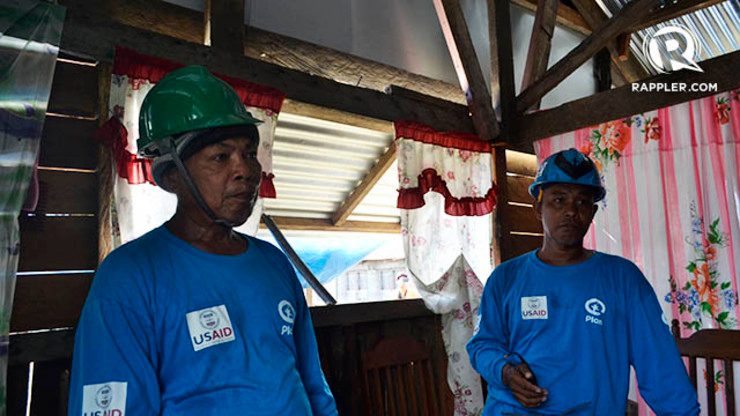SUMMARY
This is AI generated summarization, which may have errors. For context, always refer to the full article.

TACLOBAN CITY, Philippines – When your main source of livelihood is taken away from you, how will you survive each day?
Demetrio Gabito has been asking himself that question since the coconut trees he used to tend in 2.6 hectares of land have been replaced by unrecoverable trunks and wild plants.
“Kung ano iyong rami dati, biglang wala na sa isang iglap (Everything was lost in a blink of an eye),” he told Rappler.
Farmers belong to the poorest sector in the country. Sixty percent of small coconut farmers lived in poverty even before Typhoon Yolanda struck the Visayas region.
According to the Department of Agriculture (DA), coconut farmers suffered the biggest crop loss due to the super typhoon, amounting to almost P18 billion ($399 million)* in the affected areas alone.
The devastation took a huge toll on the coconut-dependent residents. Along with the uprooted trees, farmers and their families also felt their lives being pulled apart when they suffered the wrath of the strongest typhoon ever recorded in Philippine history on November 8, 2013.
Still waiting
There is a light at the end of the tunnel, or so the men of Barangay Bulosao in Lawaan of Eastern Samar think. Since early this year, they have been waiting for the more than 1,000 seedlings promised to them by the Philippine Coconut Authority (PCA).
The hybrid coconut seedlings are ready, they said, but the challenge is how it will reach their municipality – the farmers don’t have enough money for transportation expenses.

According to Gabito, only one family has claimed the seedlings so far, owners of a small truck that managed the 5-hour travel. He said the rest could not do the same, and could not rely on government help in this regard.
“Wala pa raw budget ang gobyerno para mag-transport; mas lalo naman kami (The government said that it doen’t have any budget to transport [the seedlings]; more so us),” he said.
They were given an option to acquire regular coconut seedlings from a nearby state university but there is a catch: It will take 13-15 years before the first harvest, unlike the hybrid which promises a big yield in just 3-5 years’ time.
For families falling deeper into the poverty trap as each day passes, a 13-year wait until they regain what they’ve lost is a very long time.
“Sa haba ng hihintayin mo, ang daming puwedeng mangyari,” Gabito said. “Maganda o pangit, ewan na lang.”
(A lot of things can happen during that long wait. Whether it would be for better or for worse, we don’t know.)
Jumping from job to job
The 53-year-old father of two resorted to finding any job to make ends meet for his family. From being an electrical appliances repairman to a barber, he did everything just to put something on the dinner table.
“Kailangan magpursige kasi dalawa yung pinapakain at pinapaaral ko. Kung titigil ako, wala na mangyayari.”
– Yolanda survivor and coconut farmer Demetrio Gabito
On days he considers himself to be lucky, he’ll take home more than P200 ($5). He recently charged P20 ($0.25) per haircut that will only take about less than 5 minutes, to accommodate more customers.
“Kailangan magpursige kasi dalawa yung pinapakain at pinapaaral ko,” he said. “Kung titigil ako, wala na mangyayari.”
(I need to persevere because I have two mouths to feed and send to school. If I give up, nothing will happen to them.)

When his coconut farm was still intact, he used to employ at least two neighbors to help him. Now, they’re all looking for more stable jobs.
Gabito and 11 other residents recently took part in PLAN International’s construction operations in rebuilding the destroyed homes in their community.
Under the program, those qualified underwent a 15-day training program under the Technical Education and Skills Authority (TESDA). They acquired not just the basics but other skills that can help their families in the future.
PLAN International has also implemented this program in other areas damaged by Typhoon Yolanda in Eastern Samar.
Aside from rebuilding their own homes, those involved also get to work on other houses in their neighborhood – a modern twist on the concept of bayanihan (cooperation).
But they know everything will not last long.
Until then, the men of Bulosao will have to wait until they can hang their hard hats for their straw hats, unbuckle their tool belts so they can carry bolos, and be coconut farmers again. – Rappler.com
*$1=P44
For Rappler’s full coverage of the 1st anniversary of Super Typhoon Yolanda (Haiyan), go to this page.
Add a comment
How does this make you feel?
There are no comments yet. Add your comment to start the conversation.